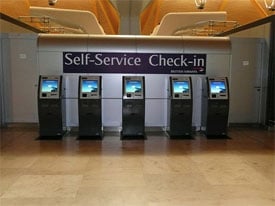To a consumer, a company’s social media presence is a direct pipeline to the management and leadership of a company. And for company leadership? Social media is a direct pipeline to your most important asset -- your customers.
Never has this been more clear than in the example of Hasad Sayed vs British Airways. Social media has created a whole new world, putting the individual customer on the same level playing field as the higher end of a company hierarchy -- and if you aren’t paying attention, it can really cost you.
But, how do you get started? And how do you make sure you’re putting energy into the right parts of customer service? It’s easy, with these four best practices.
Let Yourself Be Found
Even if you’re not ready to invest money in social media management or coverage for your company brand, the very least every online entity needs is to be present online. Let yourself be found by creating accounts on each platform relevant to your company -- we recommend the power foursome of Google+, Facebook, Twitter, and LinkedIn.
Listen to Every Mention
Once you’ve got established accounts, turn on your notifications and alerts to make sure that you are listening for customers who are talking about you. Take it a step further and set up advanced searches on these platforms to seek out mentions of your name (or names of company officers), your profiles, or your competitors.
Respond in All Situations
It makes sense to respond to fans of your company and prospective clients and employees. But, make sure you don’t ignore the negative reactions! Sometimes a negative review on a social media platform can be a great opportunity to show your concern, your customer service skills and "right" a wrong situation.
The key here is to empower your marketing and social media employees to offer special offers and treats for legitimately displeased customers. That way your social media support will be genuine, effective, and anything but superficial.
Move the Conversation Forward
Beyond simply responding, re-tweeting, or “liking” a customer’s interaction, take it a step further and ask a question. Move the conversation forward and encourage your customer to share more about themselves.
For example, if a customer tweets about an enjoyable experience with your store or employee, retweet the comment and respond, asking them to share how the experience could have been even better, or if they had brought any friends or family with them.

Is your social media presence proactive, or an online wasteland? What do you think is holding you back?
photo credit






